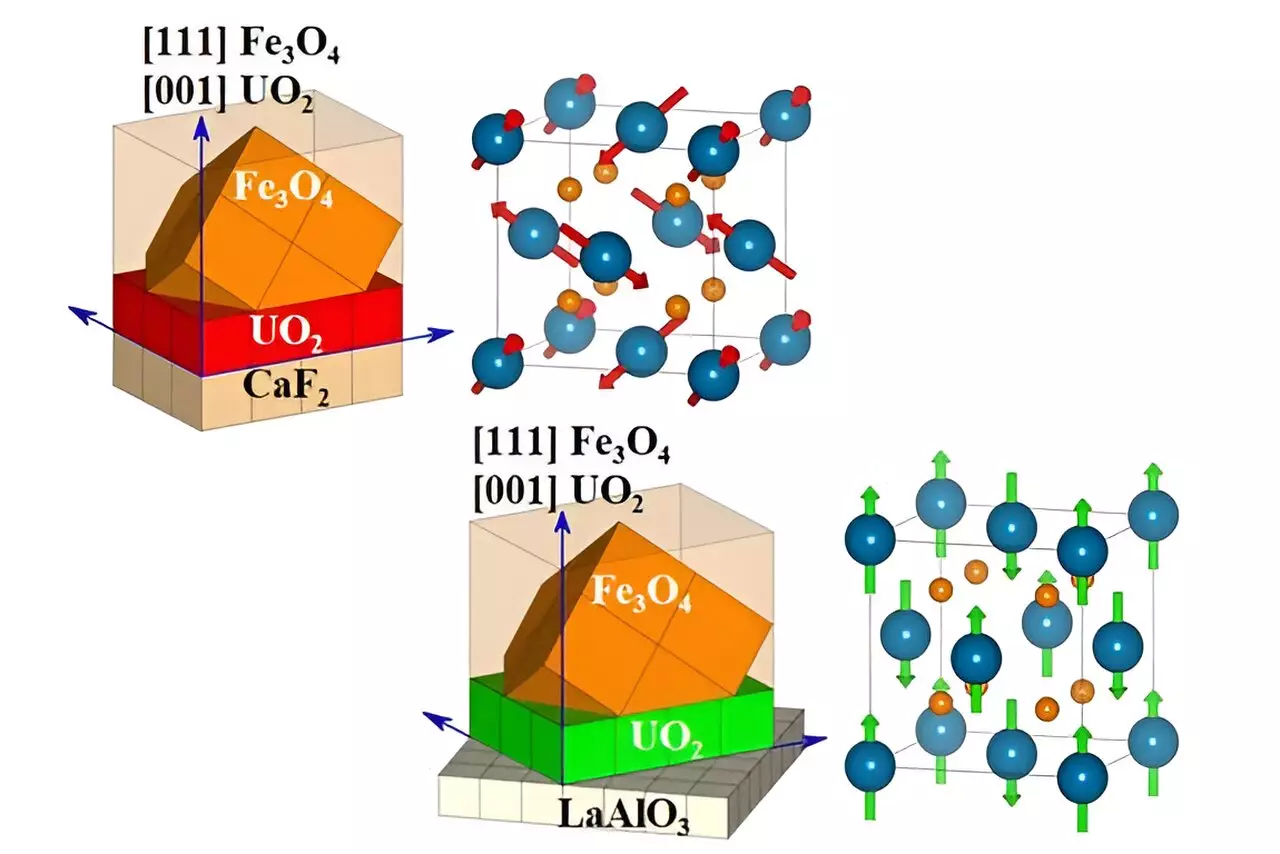Electronics have traditionally relied on the movement of electrical charges to transmit signals and currents. However, a new field called spintronics has emerged, which focuses on manipulating electronic currents and signals through the intrinsic magnetic moment of electrons. This innovative approach has opened up new opportunities for research in electronic technologies.
In the realm of magnetism, antiferromagnetism stands in contrast to ferromagnetism. While ferromagnetic materials have atomic spins aligned in parallel, antiferromagnetic materials have neighboring atoms with opposite spins, cancelling out any external magnetic force. Despite the challenges in manipulating spins in antiferromagnetic materials, researchers have discovered that these materials hold promise for spintronic applications.
An international research team, including members from TU Wien and the Czech Academy of Sciences, recently achieved a significant breakthrough in spintronics. By utilizing surface strain, the team successfully switched the spins in an antiferromagnetic material. This development has the potential to open up new avenues for research in electronic technologies and spintronics.
Unlike ferromagnets that can be easily manipulated with an external magnetic field, antiferromagnets require a more sophisticated approach. The researchers found that by applying mechanical stress to compress the crystal lattice of specific antiferromagnetic materials, they were able to switch the magnetic order of the material. This innovative technique demonstrates the potential for utilizing magnetic frustration in known materials to manipulate antiferromagnetic spins.
The ability to switch antiferromagnetic materials using surface strain has significant implications for electronic technologies. By developing methods to manipulate the spins in these materials reliably and precisely, researchers can pave the way for the creation of advanced computer memory cells, such as MRAM. This breakthrough marks a crucial step towards harnessing the full potential of antiferromagnetic spintronics in electronic applications.
The research conducted by the international team involving TU Wien and the Czech Academy of Sciences represents a major milestone in the field of spintronics. By successfully switching the spins in antiferromagnetic materials using surface strain, the researchers have opened up new possibilities for leveraging the unique properties of these materials in electronic technologies. This breakthrough marks the beginning of a new era in spintronic research and highlights the importance of exploring alternative methods for manipulating electronic currents and signals.


Leave a Reply